In spite of Enzo Ferrari’s rumored exclamation of “the most beautiful car ever made” when describing the Jaguar XKE, I would have to disagree. I know he supposedly made the statement in 1961 but some of his own designs back then were major-league attention getters too. And there’s no denying it, the Jaguar XKE made a big visual statement, but most beautiful…ah, it’s all subjective. Regardless, this 55K recorded mile 1970 XKE is quite the looker so let’s give it a review. It is located in Gaylordsville, Connecticut and is available here on eBay for a current bid of $35,300, reserve not yet met.
Considered a Series 2 Type E, this example is prominently wearing a boo-boo of some kind on its bonnet. The scrape is evident and there’s a good overlay of gray primer from the leading edge and back about a third of the way. The trunk lid has the same garb going on. The seller states, “Car is rust-free as far as I can find“. There are many, many images included and the rockers appear to be clean but possibly subjected to repair somewhere in the past. The underside does check out with nothing of alarm standing out. The chrome and wire wheels are considered to be “very nice” and I would agree.
You always have to be on the lookout for weasel words and here they are in the form of, “Service history for last 30 years, with motor gone thru…” What does “gone thru” mean? Check the oil or the coolant level? It could mean very little, or perhaps nothing. Admittedly, the 55K mile example, 265 HP, 4.2-liter, in-line six-cylinder engine looks complete (not sure about those blue spark plug wires) and the claim is made that “Car runs very well and feels great on the road“. Its four-speed manual transmission has the operational benefit of a recent clutch replacement. I have to say that Jaguar engines of this era are visual masterpieces!
The interior belies this Jaguar’s half a century of age, it looks perfect with its British sensibility. One of the most endearing features of older British cars, regardless of whether it’s a sports car, tourer or sedan is the instrument panel – and this example does not disappoint! The gauge and switchgear are very orderly and matter of fact – nothing superfluous or underrepresented here. The upholstery, door cards, and carpet show little signs of age or wear. The only demerit to be given would be for the missing steering wheel center/horn button.
There were about 72K Type E’s assembled over fourteen model years (’61-’74) and Barn Finds finders spot an enormous number of them, they are featured regularly on this site. They seem to be an eternally popular model and helped remind auto enthusiasts of what a motoring sensation they had been when there was so little to look forward to during the malaise years of the late ’70s. I’ll admit a preference for the open, two-seater body style, with a manual transmission, such as this example over all others. The standard fixed head coupe’ and 2+2 just don’t wear the sleek Malcolm Sayer design as well. Other than some partial paintwork (and a horn button), this Type E is ready to go as is, wouldn’t you agree?





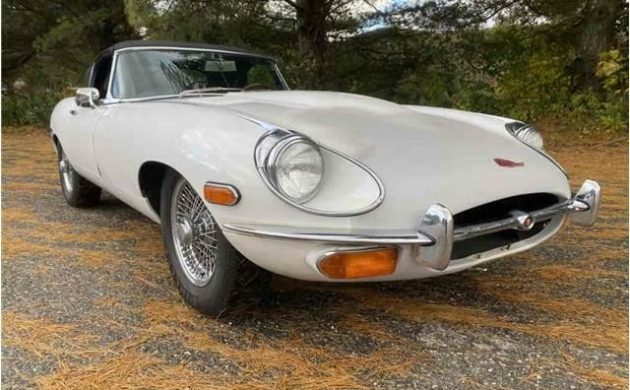
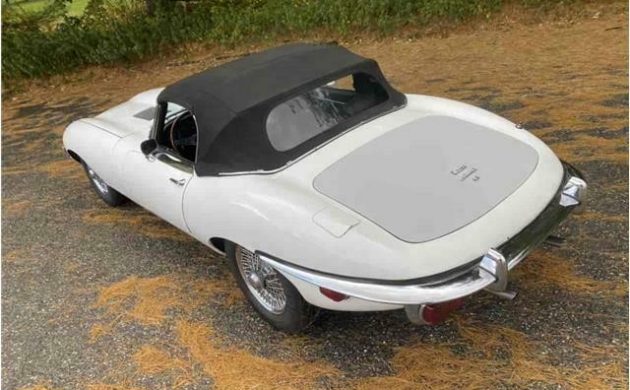



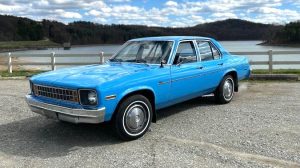

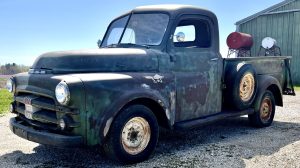
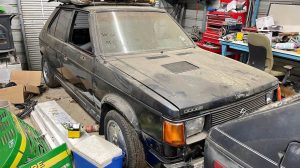


One of my favorite cars
Is the E convertible or fastback worth more?
Coupes (FHC) and roadsters (OTS) are typically valued the same. Values drop precipitously for the 2+2 version of the coupe, which are often automatics.
Easy project – buy it now! Not only is the horn button missing, but the steering wheel is aftermarket (Nardi?). But replacements for both are readily available. Beautiful and nearly all original. Looks like a winner.
Jag has a bloody nose. I fine it interesting that a dealer who deals in exotics list this on ebay. It must have sat too long on the lot. OR costs to get to his expectations are too high.
Just keep in mind that it is a toy. I owned a ’60 XK 150S for several years. You also need a Honda or ” similar” as the rental companies say, if you have to be somewhere on time every day. But with AAA you will get home eventually and meanwhile a great drive.
Charlie I agree but only of the car is only used occasionally – set up correctly and used a couple of times a month I find (have a 61 OTS ) them very reliable and, what a great exhaust note when fitted with an Abarth system.
Ferrari 250GTO is the most beautiful machine of any type ever assembled by human hands. IMHO.
The 250 GTO’s covered headlamps and nose had been “inspired” (as in copied) from Jaguar’s second E Type prototype–known as the E – 2 of 1960…which was Jaguar’s 1960 Le Mans entry, driven by American Briggs Cunningham. It lacked bumpers, being a race car, but carried what was to be the E Type body. It didn’t raise as many eyebrows as one would think, because it strongly resembled the well-known-at-the-time D Type and XK SS Jaguars, which as history was to show, proved to be the direct predecessors of the road-going E Type.
I’d own it.
To Tompdx: the Open Two Seaters in identical shape as the Fixed Head Coupes do sell for quite a bit more. The ratios do change a bit over the years. In the late ’70s and early ’80s, the roadsters sold for double what the coupes sold for…again, in identical condition. Nowadays, the ratio is more like the coupe being worth 70% of the open car in theoretical identical condition…with some exceptions depending on series and subvariant within a series.
Looking at the exhaust, this appears to be a late 1970 car, so power output was down from the 265 ponies of the Series I. The compression had been lowered to 7.9:1 and there was full exhaust gas recirculation (the pipe that goes over the engine has been removed). The twin Zenith-Strombergs virtually did the job the triple HD-8 SUs had done, by atomizing the fuel more finely, but overall, power was down by a third-to-a-quarter due to the lower compression, EGR, charcoal cannister, wider valve settings, etc. Jaguar tried to make this less obvious by lowering the gearing at the expense of top speed…knowing that few people would try to ever go much faster than posted top speeds allowable…
As for Enzo’s comments about the E Type, Jim O’Donnell, he really did say at the Geneva Motor Show of 1961 that the E Type was “the most beautiful car in the world. I wish I had built it”. It was reported by The Motor and Autocar magazines, as well as the Italian press, to whom Enzo had made the comment. Princess Grace of Monaco also heard the comment and made references to it in interviews. Ten years later Enzo made another famous comment about Jaguar, by saying that Jaguar’s new V-12, first fitted in the Series III E Type, was “the best V-12 in the world”. He obviously didn’t feel animosity towards Jaguar like he did for Ford.
@Laurence – it sounds like you have actually studied E-Type values, while my comment about OTS vs. FHC – all other things being equal – was merely anecdotal, primarily from watching sales on BaT, and selling one of each on that site. (I sold a ’67 Ser 1 FHC a few years ago, and a Ser 3 OTS a few weeks ago). I’ve seen many Ser 1 FHCs sell for more than OTSs, but again, that is merely anecdotal. I’ll trust that your appraisal is more accurate.
Thank you for your reply, tompdx. I know that in England in particular, Series I and II FHCs tend to sell, vis-a-vis the dropheads, for more than their counterparts in America, thus being closer in value to an OTS. Values can be EXTREMELY subjective at times, with no apparent logic. For example, in England Series I flat-floor E Types from 1961 can easily sell for double what a comparable ’64 might sell for, whereas in America one usually doesn’t find such massive discrepancies…although the word “usually” has its exceptions. A while ago an early flat-floor ’61 E Type COUPE sold in America for $ 680 thousand (!!), before taxes and commission…and its engine was not “numbers-matching! At most other American auctions, that nicely restored FHC would not have fetched more than $ 250 thousand, so go figure. The other thing that really muddies the waters is originality versus restored. Two cars that look the same and are in the same overall condition can now sell for quite different sums. If one is an unmolested, well-looked after, low-mileage original, it can sell for plenty more than a restored one. Nice original is becoming very rare, while any car can be restored.
In my comments I went a bit out of my way to say “in theoretical identical condition”, because so many decades have transpired that no two E Types will ever be identical…and in the end they are worth what someone is willing to pay, regardless of what other ones sell for… It is all quite muddled and confusing…but that’s the world of classic sports cars!